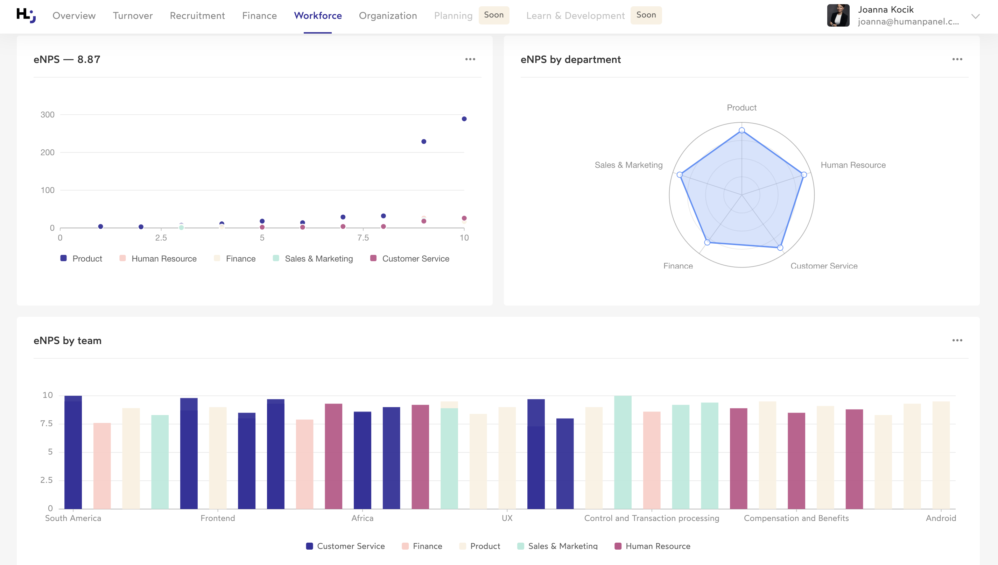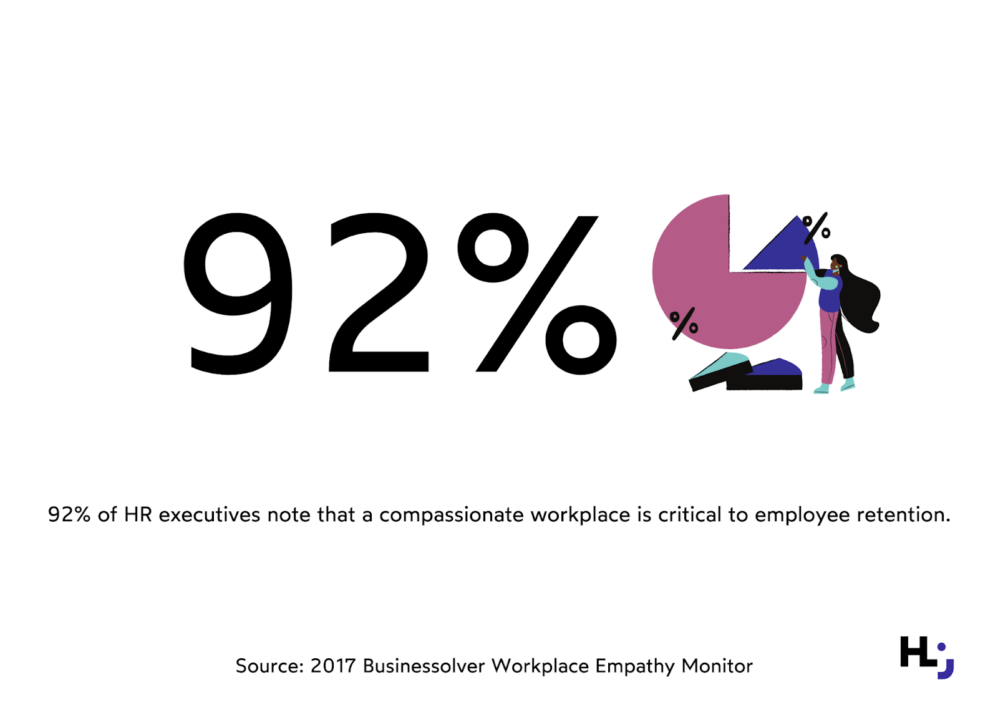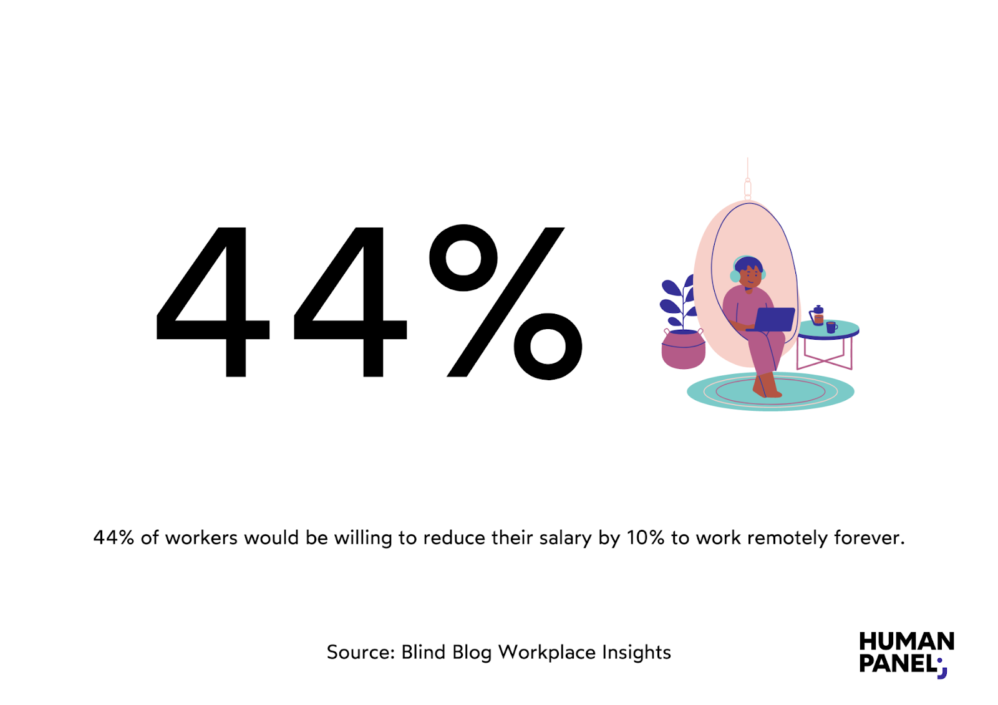8 things you can do to boost engagement of your remote team

The global level of employee engagement is only 20%, according to the State of the Global Workplace report. This is a disastrous result and the reason why you should act now if you do not want to lose your employees.
Have you noticed that your remote team engagement is decreasing every month? Although many employees claim that working from home has had a positive impact on their lives and daily performance, keeping them motivated and engaged will be one of the biggest challenges of 2022.
Data uncovered by the State of the Global Workplace Report shows that most workers view their jobs negatively and do only the bare minimum to get through the day. In the U.S. labor market, more people are leaving their jobs than ever before (2.9% in August 2021, the highest number ever recorded). Experts call it the Great Resignation, and CEOs admit that it’s even harder to keep employees than it is to attract them.
Reasons for poor remote team engagement
Why is this so? There are two main reasons that are shaping the new employment landscape, and both have to do with the Covid 19 pandemic. The first is the shift from a regional to a global market and the other – the change in people’s priorities.
With the advent of the “work from anywhere” policy, workers can now seek remote jobs anywhere in the world. Companies no longer compete with local organizations, but with other players around the world.
The pandemic has also led to a significant shift in workers’ expectations and priorities. Surveys show that about half of workers are thinking about quitting their jobs, driven by the possibility of moving from “good” to “better” working conditions.

Faced with Covid-related fears, they value job security, flexibility, and health benefits more than ever. They want to work remotely if the government decides to close schools again, paid leave when someone in their family gets sick, flexible hours and a better work-life balance. And if they lack this kind of security, they will start looking for a new job.

Employee engagement – definition
Before we delve deeper into how you can improve engagement rates in your organization, we need to define what engagement means to you and how you measure it. These are some of the practical definitions of engagement:
- “the strength of the mental and emotional connection employees feel toward their places of work (Quantum Workplace).
- “being involved and enthusiastic about, and committed to their work and workplace” (Gallup).
- “employee willingness and ability to contribute to company success” (Willis Towers Watson).
- “level of employee’s psychological investment in the organization” (Aon Hewitt).
Your company may define engagement differently. The key is to make sure that everyone has the same understanding of the term.
Why measure employee engagement?
You may be wondering why it’s important to measure employee engagement – and especially remote team engagement. Here are the key facts you should know:
Companies with high employee engagement are 21% more profitable.
Employee engagement is much more than a “soft” metric. It’s a measurable KPI that has a real impact on your business success. According to Gallup, companies with high employee engagement achieve 21% higher profitability and 17% higher productivity.
Employee engagement reduces absenteeism.
A Gallup study shows that highly engaged workplaces have 41% lower absenteeism.
Low employee engagement generates costs.
According to a study on workplace engagement in the US, unmotivated employees cost companies about $450-550 billion each year. Less engaged employees are more prone to turnover, which can be costly. The average cost of hiring a new talent was $4,129 in 2019. According to Gallup, corporate teams with highly engaged employees have a 59% lower turnover rate than those with less engaged employees.
Engaged employees provide better customer service.
Engaged employee teams get 10% higher customer reviews (according to Gallup).
How to measure employee engagement?
There are several ways to effectively measure employee engagement. One of the most common is a survey. Surveys are used to get feedback on your employees’ attitudes, motivation, and morale. Remember that anonymous surveys usually have a higher response rate and are more honest.
In a survey, or a pulse-check, you might want to ask your employees the following questions:
- Do you feel that your opinions matter at work?
- Does your team inspire you to do best work?
- Are there enough opportunities for growth in your current team?
- How likely are you to recommend this organization as a place to work? (eNPS = employee net promoter score)
Consider that job satisfaction is not synonymous with employee engagement. Even an employee who is satisfied with the compensation and company’s benefits will not necessarily an engaged one. Therefore, to determine the engagement rate in your company, you need to consider other metrics as well.
How to measure engagement without a survey?
Surveys alone are not enough to measure engagement. You also need to talk to your employees. An honest one-on-one session can do more than a survey because you can go deeper into the questions and get more qualitative feedback.
You can also use people analytics software to determine employee engagement. In this case, you should correlate different data points, such as:
- eNPS
- turnover rate
- internal promotion rate
- performance
- happiness index
- changes in compensation
- overtime hours
- absence
You can use these metrics to predict who is at risk of declining engagement or who is considering a job change. If you do not have access to this type of information or your data is scattered across different systems, we at Human Panel can help. Don’t worry, there’s no painful starting point. We will import data from any source and take care of all integrations and automations.
We also handle the data cleansing – you get a final reliable set of qualitative insights to work with. And you can rest assured that your data is safe with us. We act in compliance with GDPR legislation and ensure the highest level of protection and control for all data.
What you get from a people analytics solution such as Human Panel, is a personalized and customized dashboard that allows you to track not only employee engagement metrics, but also recruitment, turnover, and compensation. You also get access to full employee profiles, which are a treasure trove of information. Here is an example of one such profile:
If you’re interested in exploring more features of Human Panel, sign up for a free demo and discover the full potential of people analytics.
Ready to start people analytics with Human Panel?
Click here to explore all the features of Human Panel
8 things to boost your remote team engagement
Once you know that you might have a problem with poor engagement of your remote team, you can apply tactics that will work. Below you’ll find 8 strategies from Human Panel’s CEO, Daniel Aduszkiewicz. They will help you achieve your KPIs, make you a stronger remote leader and boost your remote team’s engagement.
1. Measure the engagement rate
Although it sounds trivial, measuring your remote team engagement rate and listing it in numbers is the first step in the improvement process. You can’t improve anything that is not expressed in hard data – otherwise you are basing your assessment on feelings and assumptions.
Do not treat accidental feedback and sample surveys as foundations for your decisions. We tend to treat someone’s personal opinion as a general trend, so if you want to know about employee engagement and satisfaction, conduct a survey or use people analytics to get detailed data.

2. Understand what causes the drop of engagement
Data is not whispers shared among managers. It can show you that engagement is low on one or two teams or in a particular demographic. Maybe it’s high among your new hires and declines over time? Is it connected with a particular leader? What is the profile of someone who is not engaged? What is the profile of someone who is highly engaged?
Answering these questions will show you a direction. And you can potentially save a lot of money because you do not have to spend millions of dollars in testing to find out if something works. You can use the data to measure if you are not just wasting money on solutions you have read about or something that worked for another company. Instead, you can apply surgical solutions to your pain points.
3. Build a strong remote culture
Solid and healthy company culture can keep employees engaged – even if everyone is working remotely. It has been shown that organizations that have put employee wellbeing at the heart of their culture have higher levels of employee retention. The key is to make space not only for work-related topics but also for your people’s hobbies and passions, to help them create a real bond.
One idea could be virtual coffee online meetings or casual hangouts where you chat about topics unrelated to work. You can organize company-wide virtual events, such as cooking classes, stand-ups, charity activities or diversity sessions. Try to be empathetic and train your managers how to care for people and make them always feel part of a team, important and valued for the entire company.
According to Limaede research, people who feel cared for in their organization would recommend their company to a friend (91%) and plan to stay with the company for at least three years (60%).
4. Tailor the benefits
The Covid pandemic brutally exposed that prosecco Fridays or office gyms are useless. What’s much more important is answering people’s real needs – such as the need to care for children or elderly relatives, paid time off, sick leave, and good medical insurance.
Obviously, a lot depends on the demographics of your workforce: gender, age, family status, career stage, and others. The best option is to give your employees choice and offer the benefits that they really need.
AWork+Life Report study conducted by Care.com showed that during Covid 19 pandemic family-friendly benefits are most attractive to all workers. Paid family leave, flexible working hours, health care, and substitute child care were all ranked higher than commuter benefits or student loan assistance. Half of the respondents said that family-friendly benefits were essential when choosing an employer – regardless of whether they needed the help or not.
When thinking of benefits for remote teams, it’s wise to also think about the necessary equipment. Employees might struggle with a lack of suitable workspace or conflicts between work and family commitments. In this case, make sure that they have everything they need to be productive. This may include providing them with a desk, an ergonomic chair, or a company laptop.
5. Invest in people’s mental wellbeing
The toll the pandemic has taken on our mental health has been astounding, and it can take years to reverse. Months of isolation have led to burnout, stress, and anxiety. And it’s not just employees who suffer from mental health issues. Their families do, too.
The Centers for Disease Control and Prevention reported that the percentage of mental health-related emergency department visits in 2020 increased by 24% for young children and 31% among adolescents.
The best thing you can do is to be open to any signals from the employee side and provide them with care whenever they need. Allow them to have less productive days and encourage people to switch off after work, or work at optimal hours to find a better work-life balance.

6. Personalize communication
The reality of the past year has made us more vulnerable. The stress, fear of the future, and extreme emotions have become omnipresent. This is why you should see your employees as human beings, not just “talents”.
This is why honest and transparent communication is key to improving remote team engagement. When working remotely, your tone and intent can be distorted by online communication tools and lack of face-to-face interactions and body language. This is why you should always aim at personalizing communication and schedule regular check-ins on how your remote team is doing. At the same time, try not to create a video fatigue and avoid ineffective meetings. There’s no worse feeling that a feeling of a wasted time.
7. Be flexible
Juggling work responsibilities while helping kids has taught us one more thing: we need to be flexible. Surveys show that as many as 74% of workers say they would be less inclined to leave their company if they could work remotely.
Another survey found that around 44% of workers would be willing to reduce their salary by 10% to work remotely forever. According to CNBC, businesses that don’t offer any kind of flexible-work options are losing out on up to 70% of job-seekers.

8. Give people learning and development opportunities
A recent LinkedIn Jobs Switchers Report shows that the top reason IT professionals leave their jobs is a concern about lack of opportunities and career growth. To make people engaged, you need to create a clear path for advancement and provide them with training opportunities.
If your employees don’t know where they are heading in their career and what possibilities they have, it will be hard to keep them engaged. According to SHRM’s 2017 Employee Job Satisfaction and Engagement Report, only 29 percent of employees are “very satisfied” with current career advancement opportunities available to them in the organization they work for.
However, 41 percent consider this a very important factor to job satisfaction. Therefore, companies should pay close attention to making sure employees feel they can advance in their careers without leaving the company.
Conclusion
Keeping a high engagement rate of a remote team is not an easy task. It will never be the same as being in the same physical space. Being a great manager in the office doesn’t automatically mean you’re a great remote manager. It is where companies should and will invest – in training and coaching future remote leaders.
But there are some things you can do to increase your remote team engagement. Try to put people at the heart of your business, show empathy, and appreciate efforts. Be as flexible as possible and engage people through powerful company culture. Communicate with your employees and be aware of who works for you.
Don’t spend your money on experiments. Use data to support your decisions and measure what works for you. Track your top performers to prevent them from leaving, and with a bit of help from tools like those offered by the Human Panel, you’ll be able to manage your workforce better.




